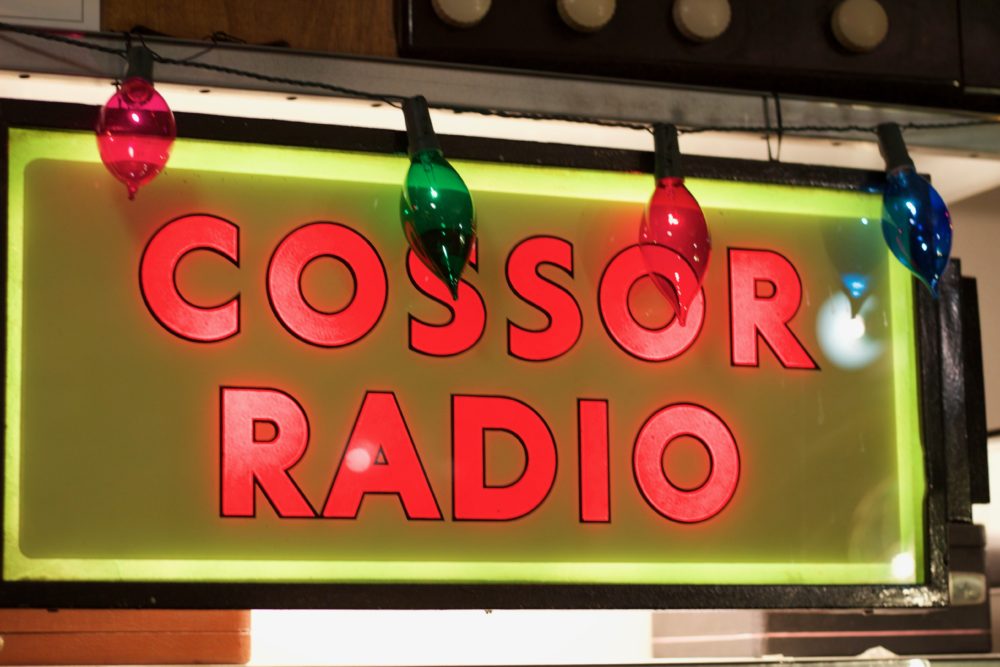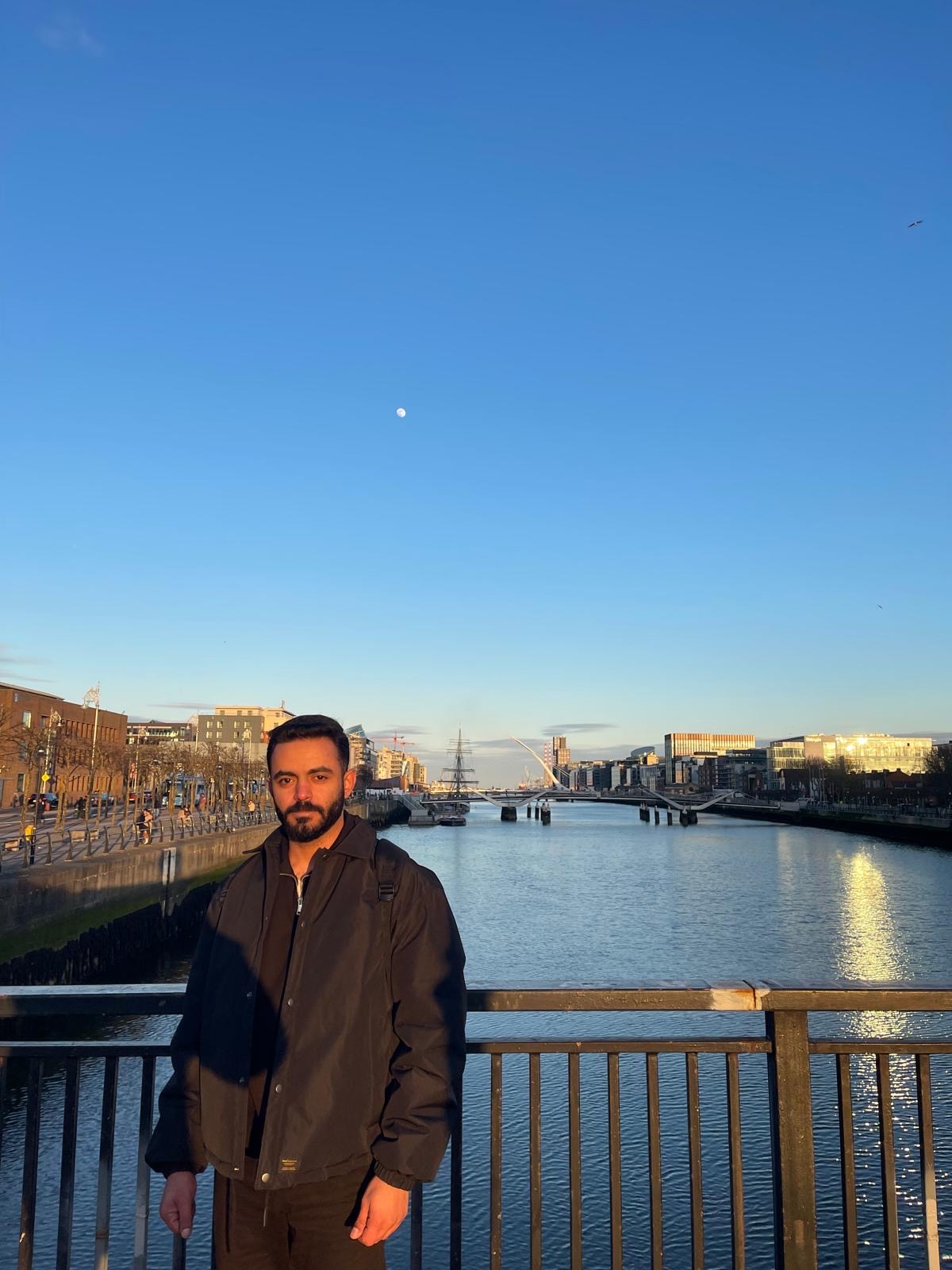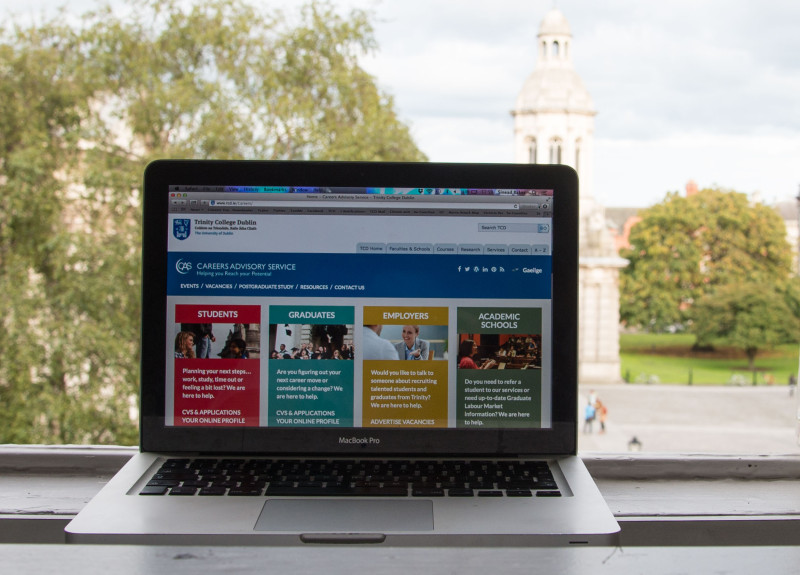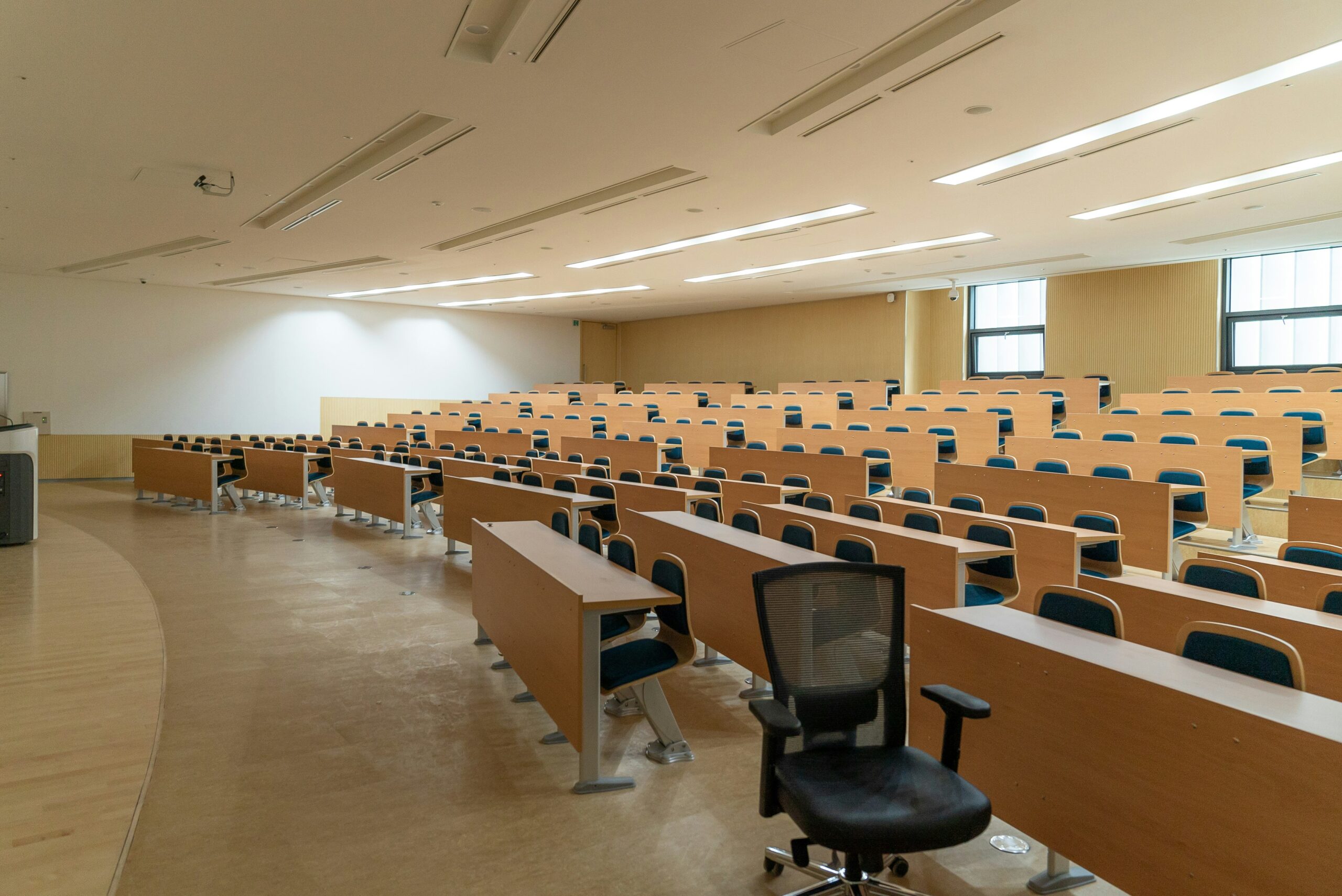Two extraordinary things happened on a September evening in 1947: the All-Ireland football final was played for the first and only time outside of Ireland – in New York. At the same time, in a small remote village in Mayo, a boy listened to a radio for the first time. The artificial, green light of the radio – the “green magic eye” – shone out past the crowd of adults that were gathered inside a cottage to listen to the match on the “wireless”, through the cottage window, and into a young Pat Herbert’s eye, “damag[ing] [his] brain”. Herbert would claim that the damage done to him from the radio light on that dark, September night is what led him to be sitting in front of me, explaining the history of radio and how the Ye Auld Hurdy Gurdy Museum in Howth came into existence.
The museum is housed in a Martello tower overlooking Howth and the Irish Sea. The tower has its own connections to the development of the radio, which are similar to Herbert’s lifelong collection and fascination with the device. Michael, one of the museum’s volunteers, mentions that every time he begins a tour of the tower’s treasures, he stresses the fact that “every single thing you see here today was collected by one man”.
It is hard to believe that the immense collection of radios, gramophones and other communication paraphernalia could have been found by just one man, but none the less it was. The first thing that catches my eye is an old, copper potato sprayer, just as it was being moved away so I could sit down with Herbert. I wonder what place a potato sprayer would have in such a museum, when Herbert begins to explain that crystals used to be dissolved in water overnight, and then sprayed on the potatoes the next day in order to prevent blight: “A man came in here to me one time and told me, he said ‘I used to wait for my father to get the stone in for spraying the potatoes and it made a great crystal, and you’d pick up the reception on it’. Hard to imagine today.” Michael jumps in to show me a crystal set, or crystal radio, one of the first radio prototypes: “I’m not a technical man, and this to me is pure magic, because there is no battery, no electricity. All there is, is [a wire in the ground] and an aerial, piece of wire, on top of a tree and a pair of earphones.” Baffled, I look at the set, which was essentially a little piece of crystal that you tickled with “cat whisker”, or piece of wire, asking “And there is no power?”, trying to understand how such a device could pick up radio waves in the atmosphere.
This was the beginning of radio, Herbert explains, in the immersive narration that is characteristic of his Mayo background: “We can date that back as far as 1000 BC. There is a shepherd in a cave out in Greece, and he minding his sheep, and he has a steel ferrule on his walking stick, and it sticks to the rock, he holds it up and it sticks to the rock, the steel, and that is the beginning of magnetism and static electricity.”
At this point I didn’t know where Herbert was from, and I couldn’t place his accent. In response to my question, he solemnly says: “I’m a Mayo man, but sure we all have our problems.”
The next thing Michael shows me is a spark transmitter, or “early Wi-Fi from 1880”, as he calls it. To work it, you would attach a morse key and turn on the spark transmitter. The spark transmitter in the museum runs 60,000 volts across its spark-gap – two rods that allow electricity to run between them – generating radio waves. These were the first devices to allow for radio transmission. Michael proceeds to say that if he would connect the transmitter to an aerial and put an earth in the ground, they would block all communications in the area: “We love to do it but they would shut us down.” “Strong enough it would take down an aeroplane”, he adds. I joke that I now know where to go during an apocalypse. We can thank this device for preceding Wi-Fi, which we all know to be an essential for nearly every human being in the modern world.
At this point I didn’t know where Herbert was from, and I couldn’t place his accent. In response to my question, he solemnly says: “I’m a Mayo man, but sure we all have our problems.”
We return back to where we had been sitting before, underneath a neon diner-style sign with a clock in the middle. Herbert tells me about a radio producer from Denmark by the name of Rikke Houd, who came to visit him. He didn’t know at the time that she was a world-renowned producer, but he talked to her, “like I am here with you today”, and she put the recording of their conversation together to make an animated video called The Light. The video, narrated by Herbert, details his first interaction with radio back in 1947, listening to the All-Ireland Football Final between Kerry and Cavan – Cavan won, would you believe. The final was held in New York as part of the Great Famine commemorations, intended to honor those who fled to the US between 1845 and 1852. “You’ll see now the whole effect”, this fateful night “had on my life”, Herbert adds, as the video begins on an old 2003 Windows computer. Narrating the video, Herbert says: “I don’t know where it is going to end, there is a great big universe out there, I really don’t know, so little about it, the future.”
“It went all over the world”, Herbert says after the video ended. “Four hundred radio stations across America put it out for Thanksgiving Day, because of the New York connection.” He continues, recalling the effect of hearing that radio all those years ago: “I was confused, and I still maybe am. It damaged my brain, I told Rikke. I was confused because all the neighbours were calling it a wireless, and my parents, having returned from America a few years earlier were calling it a radio.” Herbert explains that then the technology eluded him, as “there were no wires coming into the village, so I couldn’t understand how this could come through space without wires, and that’s what got my interest.”
The other thing that sparked his interest was the light: “Before that occasion all we had was an oil lamp or a candle, but now there is this artificial lighting. There were batteries operating the radio, and you must remember it was an electricity free zone.” A few years following his first encounter with radio, at the age of 16, Herbert emigrated to London. He worked in a hotel, and “I had my own room, and my own radio, and I felt that I was very rich, because I could pick up all these stations from around Europe. That was the fascinating thing about the radios at that time, the European ones, was that all the stations were on the dial.” Herbert describes his time listening to his radio in London, and the stations across Europe as something of an education: “You’ve picked up all the different languages and you picked up the different musics that you weren’t aware of.” When talking about the importance of radio to Ireland, Michael said that before radio, people would not have thought about other people in Ireland having different accents: “They wouldn’t have realised it until after radio.” “When I went to London first, I wasn’t aware of all these different languages around Europe, and all these different music sounds”, adds Herbert.
“I had my own room, and my own radio, and I felt that I was very rich, because I could pick up all these stations from around Europe. That was the fascinating thing about the radios at that time, the European ones, was that all the stations were on the dial.”
“The first radio I owned, in fact, I didn’t own it, my late wife owned it, before we were married in London.” Michael puts forward the question to Herbert: which did he fall in love with first, the wife or the radio? “Well, my good lady, of course”, Herbert says fondly. “I spend hours on the dial, going around the dial and sometimes they were lit up with the different colours”, he continues pointing to some radio sets on display. “That got me hooked, hooked on it.”
Finally, we got some insight into his history with radio. Herbert then recounts the story of how he first started collecting: “This was in the early 1950s, and I was living in West Kensington, and I went work each morning, which was very early. I realised that on a particular day there was all those records thrown out for the dust bin men.” He hadn’t realised that vinyl records were coming into fashion and the old 78s were being thrown out. Herbert says that this cast him back to the west of Ireland during the war, where their records were badly worn because they couldn’t get needles, so they would resort to using nails instead. He thought of how useful the records being thrown out could be, some being barely used, so he began to collect them in the mornings on his way to work. “There were some interesting ones in it there, like the King’s speech, and Hitler, Mussolini and different people on 78 records, and I thought this was very fascinating. A short time later I bought myself a little gramophone, and I used to play the records on it, and that got me into the collecting.” Herbert began collecting records, gramophones and radios at this point.
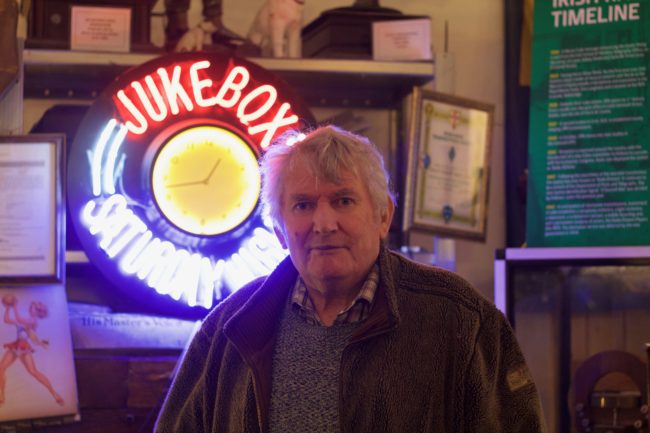
For the sake of both storytelling and clarity, Herbert insists that he detail some of the history of radio and communications, separate from his own history with the technology: “My history with radio only goes back a lifetime or whatever, but radio and communications goes back a lot further than that.” He begins by explaining how a professor in Trinity, in the late 1800s, by the name of George Francis FitzGerald, joined Guglielmo Marconi on a boat in Howth to watch the Kingstown Regatta in 1888: “I’m just trying to put you in the picture.” Marconi was an Italian inventor and electrical engineer, known for his work with long-distance radio transmission. Even this foundational figure of radio technology had a connection to Ireland: Annie Jameson of the Irish Jameson Whiskey family was Marconi’s mother, who had travelled to Italy to study opera singing. When Marconi first came to England, he had the Jameson family name, and their wealth, to support him.
Showing me a drawing of Marconi and FitzGerald on the boat, Herbert explains why such a meeting was so important to the history of wireless communication: “It became the first journalistic use of wireless in the world, and the first sporting event in the world transmitted by wireless.” As the boats passed the finishing line in Howth, across from the Martello tower we now sit in, Marconi used Morse to telegraph the results back into the harbour master’s office in Kingstown, now Dún Laoghaire. This event, he says, is “what put Marconi on the map, because all the journalists in and around wrote about it, what was happening”.
Herbert returned to Dublin in 1973 to settle down, and he “continued his weakness” for collecting: “It spiralled from there in a sense I would go to all the markets, picking up bits and pieces of radios, bringing them home to fix them.” At this point, Herbert only collected as a hobby. He was not too concerned with the history of communications and radio until he found an old Dublin Penny Journal dating back to January 1904, in a Dublin market. “It told the story of an American inventor, whom I was aware of, was invited to come here to Ireland by the British Post Office in December 1903”, he recalls, “and actually set a radio station here in the Martello tower in Howth.” Lee de Forest, the American inventor, had been in competition with Marconi, as Marconi was also conducting experiments in the UK and Ireland at that time.
Today, over 34 million Americans claim Irish ancestry, while nine signatories of the Declaration of Independence in 1776 were Irish. From an economic perspective, US companies are continuing to invest heavily in Ireland
De Forest began transmitting messages from Howth to Holyhead in Wales, and had a much faster service than Marconi, but “he didn’t get a contract with the British Post Office because the leading members in the House of Commons had Marconi shares”, explains Herbert. “[De Forest] went back to America a very disappointed man, but on the journey there was a fella tracking what he was doing, and he was going out to report on a war that was starting up the following year between Japan and Russia, the Japanese-Russo War of 1904.” The journalist was from the Times in London. He reached out to de Forest on his boat back to America “and he bought the equipment here, that [de Forest] had in Howth and in Holyhead, and had it transported out to the far East to report on the war. So the equipment that actually was in Howth here, ended up reporting on war, for the first time, in the far East”. The penny journal Herbert picked up “awakened” him to the history of radio, and he “started to study the history of it, from there on in”.
“I realised sometime later that Marconi had a station here, and that Marconi in fact came here, and the very birth of radio could actually come back to here”, Herbet continues, “because in 1898 Marconi was in England demonstrating his wireless equipment to the Post Office in England, and Lloyds of London took a particular interest in him because they insured ships going to sea, and at that time, when ships went right over the horizon and disappeared, nobody knew anything about them”. Lloyds decided that they wanted Marconi instruments in the ships and on-shore, so they gave Marconi a contract to set up two stations: one off the coast of Antrim, and one on the mainland, in Ballycastle. “The powers that be of Dublin and the newspaper at the time, the Express, and the sister paper the Evening Mail, they invited Marconi down to Dublin to report on the Kingstown Regatta, one of the big sporting events in the British Empire.” The results, after they reached the Harbour master were telephoned into the paper, and they were published in the Evening Mail that day: “This was a first at the time, and the day was very foggy so the people of Howth and Kingstown couldn’t actually see the race, but they could see the results in the evening paper.”
Marconi set up another radio station in Galway in 1907, where a young Jack Phillips was a senior operator. Around Christmas of 1911, fed-up with rural life, Phillips asked for a transfer back to London. On his return to London, Phillips was offered the position of first radio operator on the Titanic, and he was one of the last to go down with the ill-fated ship: “It is often forgotten, the history of the station in Galway with the Titanic.” Phillips and the Marconi system saved 700 lives the night the Titanic sunk.
“In fact, I read once that radio is theatre for the mind, where you actually form pictures in your imagination, like the football match.”
Ireland’s history is even further intertwined with the history of radio, as the first broadcast in Ireland was made during the 1916 Easter Rising, although by happenstance. “It was supposed to be a transmission from Sackville St [now O’Connell St] to Cahersiveen”, in Kerry. Herbert explains that this did not happen because the men in charge of bringing the equipment to Kerry died in a car accident. Those left in Dublin were essentially broadcasting out of Ireland “willy-nilly”.
Looking up at the 1916 commemoration poster, which details the story behind the first broadcast in Ireland, I ask Herbert if he believes the museum will become increasingly more important as time goes on. “I do believe so”, he says, adding that “what we have here is the birth of radio, the birth of communications”. I ask Herbert how he managed to have the museum in the Martello tower, he explains: “I knew the history of the tower and such, but I never thought I would get in here.” Herbert contacted Fingal County Council, and following its refurbishment in 2001, the council offered the tower to Herbert, who opened the museum in 2003. “After my wife died, I was at loose ends, so I got in touch with Fingal County Council.” Herbert shows me several different items in the collection, each of which he says has a story. Included is a poster of Audrey Hepburn during her first gig in America, advertising Pilot Radio in the 1940s; a gramophone with a wooden horn on it, identical to the one gifted to Captain Robert Falcon Scott before his expedition to the Antarctic in 1911; and, of course, multiple styles of radios from throughout the decades. The museum also houses memorabilia from many time periods, which helps to create a feel for each particular era while browsing the collection. “Radio was about listening”, Herbert says. “In fact, I read once that radio is theatre for the mind, where you actually form pictures in your imagination, like the football match. You didn’t have to view anything you listened attentively all the time.” He adds: “[Radio] is very unobtrusive, if you like. It doesn’t engage you if you don’t want to.”
